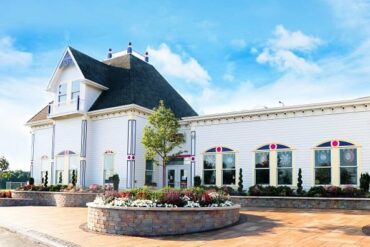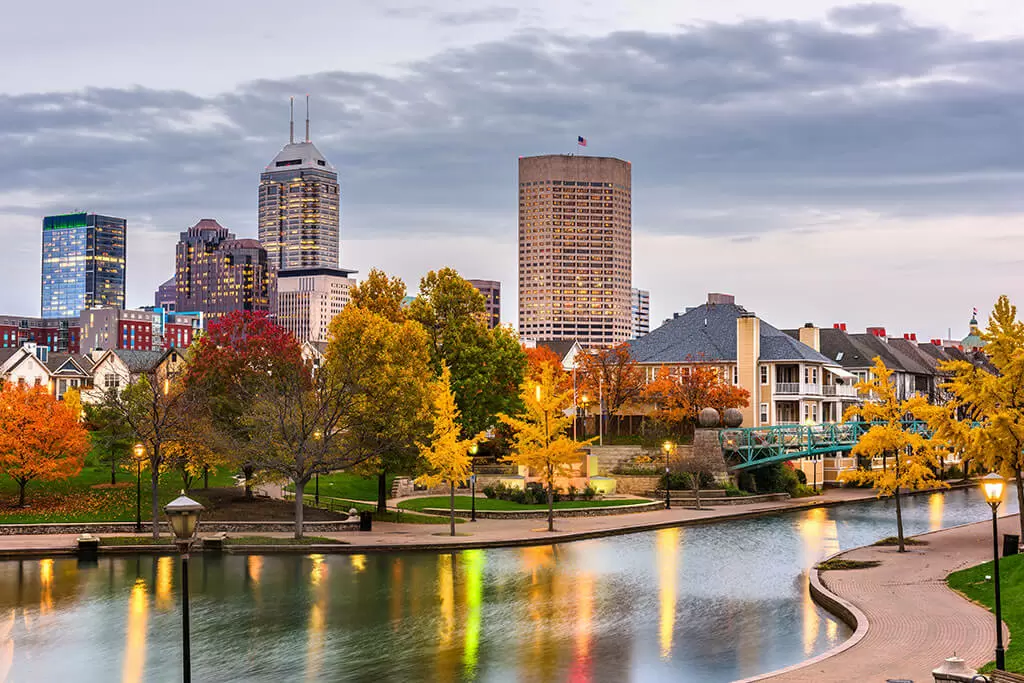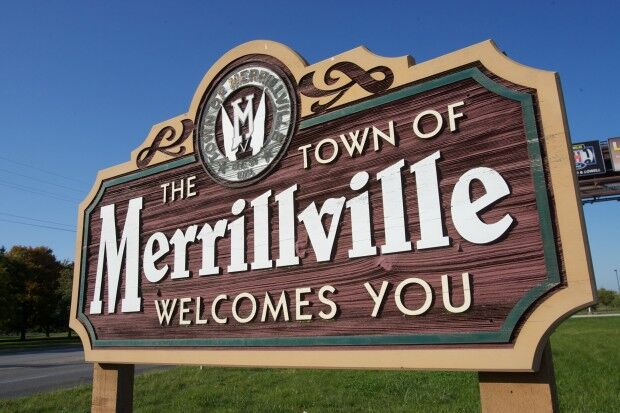Columbus is best known as an architectural destination and home to the global headquarters of Cummins Inc., a manufacturer of diesel engines, but it’s also home to the notable natives listed below. Columbus is home to one of the best examples of architecture in the United States, thanks to local businessman J. In the 1950s, he launched a program to subsidize buildings with the stipulation that they were designed by great architects. He wanted to foster a world-class community and helped finance the investment because he believed that “mediocrity is expensive.
The result is a city filled with more than 70 buildings including churches, banks, schools and homes designed by famous architects. That’s why I was surprised to learn about Columbus, Indiana, which is known for its modern architecture. It’s just 1.5 hours from Cincinnati, making it a great destination for a day trip. Here are 10 reasons why you should add Colón to your list of day trips or road trips.
The First Christian Church shown above was completed in 1942 and is believed to have been the first modern church in the United States. The history of this building dates back to the 1900s and there is an incredible collection of fountains, refreshments and souvenirs to see. You can also listen to a restored orchestra from the 1870s. One of the best examples of modern architecture in the United States can be found in the city of Columbus, Indiana, which knows how to combine modern style with small-town hospitality.
Architecture tours, however, are just one of the many things that both visitors and locals can do in Columbus. In addition to the more than seventy structures designed by famous architects, such as Eero Saarinen and I, M. Pei, the city is also home to gardens, parks, theaters, museums, orchestras, excellent restaurants and more. Pei, Eero Saarinen and others, Columbus has been named the sixth most architecturally important city in the U.S.
UU. Irwin Miller wanted to bring a modern church to his hometown of Columbus, Indiana, and it was mainly his family that needed to convince. The Millers were the city’s most prominent family. They owned a local bank and co-founded Cummins Engine Company, an industry-leading diesel engine company.
When their congregation outgrew its previous building, the Miller family graciously donated land and money to build a new one. Irwin, who wanted a modern design, his family was more in favor of a Gothic church. He believed that modernism represented the values of both Columbus and his church, and eventually convinced the rest of his family to see it his way. Modernism’s less is more aesthetic was a marked departure from the more ornamental art deco and neoclassical styles that preceded it.
Irwin understood that the congregation was not interested in luxury or showing off. They valued simplicity and community and had selected the theme “Our Church is Our People”. While I admire the First Christian Church, a plant is being sold in the library behind me. Columbus residents stroll by folding tables with seeds and young trees, seemingly without worrying about the fact that they choose their garden compositions in front of a building designed by I, M.
This isn’t to say they don’t appreciate the building’s beauty, just that the impeccable design of some of the 20th century’s most important architects is the norm in this southern Indiana city. Like many places in this part of the country, the land is mostly flat and dotted with cornfields. The population is small, around 44,000, but the 28 square miles that make up Columbus are anything but the stereotypical Midwestern city. Columbus is the mid-century mecca for modern building design and, according to the American Institute of Architects, the sixth most architecturally important city in the United States.
Without a doubt, it is the most impressive because of its size, only behind Chicago, New York, Boston, San Francisco and Washington, D., C. And almost every building in the city leads, in one way or another, to J. While there are different descriptions of how J. Irwin developed his appreciation for modern design, some claiming it was through an undergraduate course he took at Yale and others credit his travels in Europe (no doubt he wanted more in Columbus).
With the expansion of the post-war baby boom in the United States,. Irwin believed that Columbus could offer parents a unique education for their children. While he understood that good teachers and a strong curriculum were an integral part of education, he also believed that good design could help promote these basic prerequisites. Irwin proposed the Cummins Foundation Architecture Program.
Cummins would pay the architectural fees for the new public schools, as long as the city selected a designer from a pre-approved list. Schmitt Elementary, was designed by Harry Weese. Perhaps one of the most successful examples of a public-private partnership, the project soon expanded schools to other civic buildings, including the library. As a result, Columbus became the living museum of modern design that it is today.
Other notable Columbus buildings include Robert Venturi Fire Station No. 4, the Irwin Conference Center (formerly Irwin Union Bank and Trust) and the North Christian Church of Eero Saarinen, and Myron Goldsmith’s The Republic Newspaper Office of Skidmore, Owings %26 Merrill. This particular post office has an interesting origin story. Sitting in the Oval Office with President Lyndon B.
Johnson, Lee Hamilton, a congressman from Indiana’s ninth district, pressured then-postmaster Larry O’Brien to allow Columbus to abandon the traditional designs and architects that the post office department was used to using. As Kriplen describes in her book, the president turned around and said, “Larry, give Hamilton everything she wants. Roche’s post office is what I wanted. To this day, the ultimate achievement of the architecture program goes beyond pure aesthetics and historical impact.
Columbus has been cited as an example of how investing in people and the community works. It is one of the few manufacturing cities that was not affected by industrial decline in the 1980s, and it mostly escaped the infamous diseases affecting similar cities along the “rust belt”. Cummins is doing well too, it’s a Fortune 500 company that currently employs more than 58,000 people. And even 15 years after J.
The death of Irwin, his favorite project, is still alive; the latest installment is a new campus for the Ivy Tech Community College, the state’s largest public institution of higher education. Katherine McLaughlin is a writer and journalist based in Brooklyn. His work has appeared in Rewire, Business Insider, Well+ Good and Real Simple, among other places. He graduated from The New School in New York City and enjoys reading, running and everything that has to do with his hometown of Hoosier.
Keep exploring with the Roadtrippers mobile apps. Plan your trip, find incredible places and take fascinating detours with our app. Your account is connected to Roadpass. From now on, use your Roadpass to log in to Roadtrippers.
We need your email address to send you travel itineraries and other updates. The Indiana Philharmonic in Columbus is an award-winning philharmonic orchestra that presents several performances throughout the year for the community of Columbus, Indiana and beyond. . .
Columbus is best known as an architectural destination and home to the global headquarters of Cummins Inc., a manufacturer of diesel engines, but it’s also home to the notable natives listed below. Columbus is home to one of the best examples of architecture in the United States, thanks to local businessman J. In the 1950s, he launched a program to subsidize buildings with the stipulation that they were designed by great architects. He wanted to foster a world-class community and helped finance the investment because he believed that “mediocrity is expensive.
The result is a city filled with more than 70 buildings including churches, banks, schools and homes designed by famous architects. That’s why I was surprised to learn about Columbus, Indiana, which is known for its modern architecture. It’s just 1.5 hours from Cincinnati, making it a great destination for a day trip. Here are 10 reasons why you should add Colón to your list of day trips or road trips.
The First Christian Church shown above was completed in 1942 and is believed to have been the first modern church in the United States. The history of this building dates back to the 1900s and there is an incredible collection of fountains, refreshments and souvenirs to see. You can also listen to a restored orchestra from the 1870s. One of the best examples of modern architecture in the United States can be found in the city of Columbus, Indiana, which knows how to combine modern style with small-town hospitality.
Architecture tours, however, are just one of the many things that both visitors and locals can do in Columbus. In addition to the more than seventy structures designed by famous architects, such as Eero Saarinen and I, M. Pei, the city is also home to gardens, parks, theaters, museums, orchestras, excellent restaurants and more. Pei, Eero Saarinen and others, Columbus has been named the sixth most architecturally important city in the U.S.
UU. Irwin Miller wanted to bring a modern church to his hometown of Columbus, Indiana, and it was mainly his family that needed to convince. The Millers were the city’s most prominent family. They owned a local bank and co-founded Cummins Engine Company, an industry-leading diesel engine company.
When their congregation outgrew its previous building, the Miller family graciously donated land and money to build a new one. Irwin, who wanted a modern design, his family was more in favor of a Gothic church. He believed that modernism represented the values of both Columbus and his church, and eventually convinced the rest of his family to see it his way. Modernism’s less is more aesthetic was a marked departure from the more ornamental art deco and neoclassical styles that preceded it.
Irwin understood that the congregation was not interested in luxury or showing off. They valued simplicity and community and had selected the theme “Our Church is Our People”. While I admire the First Christian Church, a plant is being sold in the library behind me. Columbus residents stroll by folding tables with seeds and young trees, seemingly without worrying about the fact that they choose their garden compositions in front of a building designed by I, M.
This isn’t to say they don’t appreciate the building’s beauty, just that the impeccable design of some of the 20th century’s most important architects is the norm in this southern Indiana city. Like many places in this part of the country, the land is mostly flat and dotted with cornfields. The population is small, around 44,000, but the 28 square miles that make up Columbus are anything but the stereotypical Midwestern city. Columbus is the mid-century mecca for modern building design and, according to the American Institute of Architects, the sixth most architecturally important city in the United States.
Without a doubt, it is the most impressive because of its size, only behind Chicago, New York, Boston, San Francisco and Washington, D., C. And almost every building in the city leads, in one way or another, to J. While there are different descriptions of how J. Irwin developed his appreciation for modern design, some claiming it was through an undergraduate course he took at Yale and others credit his travels in Europe (no doubt he wanted more in Columbus).
With the expansion of the post-war baby boom in the United States,. Irwin believed that Columbus could offer parents a unique education for their children. While he understood that good teachers and a strong curriculum were an integral part of education, he also believed that good design could help promote these basic prerequisites. Irwin proposed the Cummins Foundation Architecture Program.
Cummins would pay the architectural fees for the new public schools, as long as the city selected a designer from a pre-approved list. Schmitt Elementary, was designed by Harry Weese. Perhaps one of the most successful examples of a public-private partnership, the project soon expanded schools to other civic buildings, including the library. As a result, Columbus became the living museum of modern design that it is today.
Other notable Columbus buildings include Robert Venturi Fire Station No. 4, the Irwin Conference Center (formerly Irwin Union Bank and Trust) and the North Christian Church of Eero Saarinen, and Myron Goldsmith’s The Republic Newspaper Office of Skidmore, Owings %26 Merrill. This particular post office has an interesting origin story. Sitting in the Oval Office with President Lyndon B.
Johnson, Lee Hamilton, a congressman from Indiana’s ninth district, pressured then-postmaster Larry O’Brien to allow Columbus to abandon the traditional designs and architects that the post office department was used to using. As Kriplen describes in her book, the president turned around and said, “Larry, give Hamilton everything she wants. Roche’s post office is what I wanted. To this day, the ultimate achievement of the architecture program goes beyond pure aesthetics and historical impact.
Columbus has been cited as an example of how investing in people and the community works. It is one of the few manufacturing cities that was not affected by industrial decline in the 1980s, and it mostly escaped the infamous diseases affecting similar cities along the “rust belt”. Cummins is doing well too, it’s a Fortune 500 company that currently employs more than 58,000 people. And even 15 years after J.
The death of Irwin, his favorite project, is still alive; the latest installment is a new campus for the Ivy Tech Community College, the state’s largest public institution of higher education. Katherine McLaughlin is a writer and journalist based in Brooklyn. His work has appeared in Rewire, Business Insider, Well+ Good and Real Simple, among other places. He graduated from The New School in New York City and enjoys reading, running and everything that has to do with his hometown of Hoosier.
Keep exploring with the Roadtrippers mobile apps. Plan your trip, find incredible places and take fascinating detours with our app. Your account is connected to Roadpass. From now on, use your Roadpass to log in to Roadtrippers.
We need your email address to send you travel itineraries and other updates. The Indiana Philharmonic in Columbus is an award-winning philharmonic orchestra that presents several performances throughout the year for the community of Columbus, Indiana and beyond. . .




